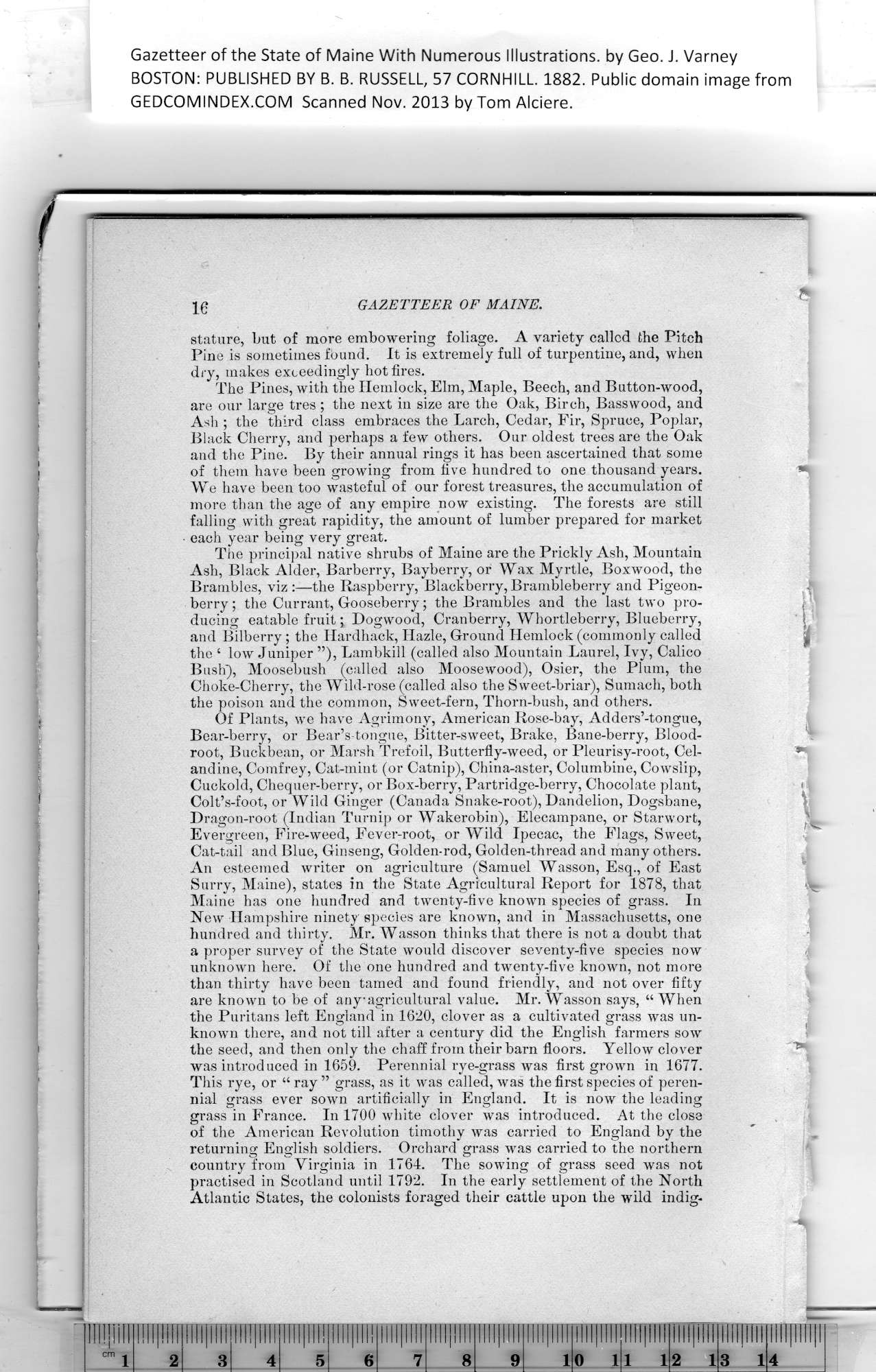Click on the image to view a larger, bitmap (.bmp) image suitable for printing. HOME PAGE ... REFERENCE PAGE ... THIS GAZETTEER’S PAGE |

Click on the image above for a larger, bitmap image suitable for printing.
|
Gazetteer of the State of Maine With Numerous Illustrations, by Geo. J. Varney BOSTON: PUBLISHED BY B. B. RUSSELL, 57 CORNHILL. 1882. Public domain image from IQ GAZETTEER OF MAINE. stature, but of more embowering foliage. A variety called the Pitch The Pines, with the Hemlock, Elm, Maple, Beech, and Button-wood, Black Cherry, and perhaps a few others. Our oldest trees are the Oak and the Pine. By their annual rings it has been ascertained that some of them have been growing from five hundred to one thousand years. * We have been too wasteful of our forest treasures, the accumulation of more than the age of any empire now existing. The forests are still falling with great rapidity, the amount of lumber prepared for market each year being very great. The principal native shrubs of Maine are the Prickly Ash, Mountain ducing eatable fruit; Dogwood, Cranberry, Whortleberry, Blueberry, ’ ^ and Bilberry; the Hardhack, Hazle, Ground Hemlock (commonly called I the ‘ low Juniper ”), Lambkill (called also Mountain Laurel, Ivy, Calico Of Plants, we have Agrimony, American Rose-bay, Adders’-tongue, . Bear-berry, or Bear’s-tongue, Bitter-sweet, Brake, Bane-berry, Blood- ^ root, Buckbean, or Marsh Trefoil, Butterfly-weed, or Pleurisy-root, Cel- ^ andine, Comfrey, Cat-mint (or Catnip), China-aster, Columbine, Cowslip, Cuckold, Chequer-berry, or Box-berry, Partridge-berry, Chocolate plant, >- Colt’s-foot, or Wild Ginger (Canada Snake-root), Dandelion, Dogsbane, Dragon-root (Indian Turnip or Wakerobin), Elecampane, or Starwort, Evergreen, Fire-weed, Fever-root, or Wild Ipecac, the Flags, Sweet, Cat-tail and Blue, Ginseng, Golden-rod, Golden-thread and many others. An esteemed writer on agriculture (Samuel Wasson, Esq., of East Maine has one hundred and twenty-five known species of grass. In unknown here. Of the one hundred and twenty-five known, not more was introduced in 1659. Perennial rye-grass was first grown in 1677. This rye, or “ ray ” grass, as it was called, was the first species of peren- PREVIOUS PAGE ... NEXT PAGE This page was written in HTML using a program written in Python 3.2 |